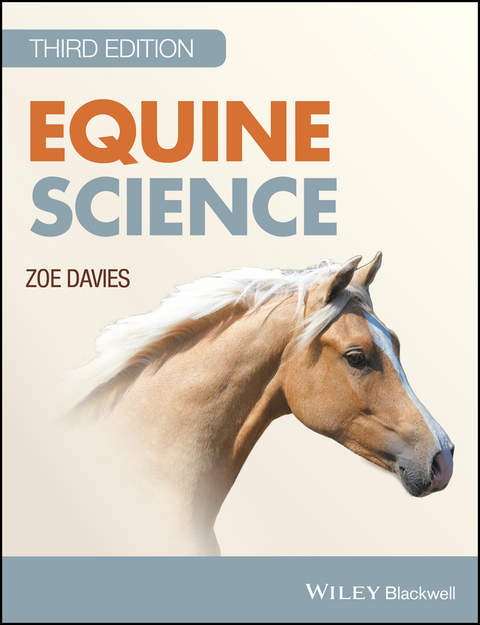Description
Efnisyfirlit
- Cover
- Title Page
- Copyright
- Dedication
- Preface
- Acknowledgement
- Chapter 1: The Biochemical Nature of Cells
- Metabolism
- Water
- Proteins
- Carbohydrates
- Lipids/Fats
- Nucleic Acids
- Protein Synthesis
- The Genetic Code
- Enzymes
- Summary Points
- Q + A
- Chapter 2: Cells, Tissues and Organs
- Cells – Building Blocks of Life
- Tissues and Organs
- Summary Points
- Q + A
- Chapter 3: Equine Support and Movement
- Points of the Horse
- The Skeletal System
- Bone
- The Skeleton
- The Mechanics of Movement
- Muscles
- The Importance of Muscle Fibres in Equine Performance
- Fatigue
- Summary Points
- Q + A
- Chapter 4: The Lower Limb
- Tendons and Ligaments of the Lower Limb
- Blood Supply to the Lower Leg
- The Hoof
- The Balanced Foot
- Summary Points
- Q + A
- Chapter 5: The Digestive System
- Foregut
- Hindgut
- Equine Microbiota
- The Gut and the Immune System
- Summary Points
- Q + A
- Chapter 6: The Respiratory System
- Anatomy
- Physiology of Respiration
- Respiratory–Locomotor Coupling
- External Respiration or Pulmonary Gas Exchange
- Internal Respiration or Systemic Gas Exchange
- Cellular Respiration
- Summary Points
- Q + A
- Chapter 7: The Circulatory System
- Foetal Circulation
- The Heart
- Blood Vessels
- Heart Evaluation and Examination
- Blood
- The Lymphatic or Lymph System
- The Spleen
- Summary Points
- Q + A
- Chapter 8: The Nervous System
- Nerves and Neurons
- Neuroglia or Glial Cells
- Organisation of the Nervous System
- Action Potential
- Resting Membrane Potential
- Synapses
- Neurotransmitters
- Endorphins and Enkephalins
- Neuromuscular Junctions
- The Brain
- Spinal Cord
- Reflex Actions or Arcs
- Summary Points
- Q + A
- Chapter 9: The Endocrine System
- Hypothalamus
- Pituitary Gland (Hypophysis)
- Thyroid Gland
- Parathyroid Glands
- Adrenal Glands
- Pancreas
- Thymus
- Ovaries
- Testes
- Pineal Gland
- The Neuroendocrine System
- Circadian Rhythms in Horses
- Sleep Patterns in Horses
- Summary Points
- Q + A
- Chapter 10: The Skin
- Structure of the Skin
- Sensation
- Melanin
- Sudoriferous Glands (Sweat Glands)
- Sebaceous Glands
- Hair
- Thermoregulation
- Skin and Coat Colour
- Summary Points
- Q + A
- Chapter 11: The Senses
- Transduction
- Adaptation
- Somatic Receptors
- Thermal Sensations
- Pain Sensations
- Tactile Sensations
- Itch Sensation
- Proprioceptor Sensation
- Special Senses
- Summary Points
- Q + A
- Chapter 12: Reproduction
- Reproductive Anatomy of the Mare
- The Oestrus Cycle
- Reproductive Anatomy of the Stallion
- Spermatogenesis
- Acrosome Reaction
- Endocrine Pathways in the Male
- Fertilisation
- Pregnancy Diagnosis
- Foetal Sexing
- Twins
- Endocrine Maintenance of Gestation
- Equine Chorionic Gonadotropin
- Progesterone
- Oestrogens
- Relaxin
- Gestation
- Implantation and Placentation
- Embryology
- The Foetal Endocrine System
- Preparation for Parturition (Birth)
- Induction
- Lactation
- Applied Reproductive Technologies
- Summary Points
- Q + A
- Chapter 13: Genetics
- The Genetic Code or Genome
- Chromosomes
- Gene Expression
- Mitochondrial DNA
- The Y Chromosome
- Alleles
- Dominance
- Sex Cells
- Hybrids
- Heredity
- Sex Determination
- Genotype and Phenotype
- Polygenic or Multiple Gene Traits
- Multiple Alleles
- Sex Linkage
- Lethal Genes
- Congenital Curly Coat Syndrome
- Epigenetics
- Muscle Disorders
- Nuclear Transfer (Cloning)
- Parental Similarity of Clones
- Mutation
- Single Nucleotide Polymorphisms
- The Myostatin Gene and Performance
- Coat Colour and Genetics
- Melanomas in Grey Horses
- Exercise-Induced Pulmonary Haemorrhage (EIPH) or Epistaxis
- Summary Points
- Q+A
- Chapter 14: The Urinary System
- Kidneys
- Regulation of Water
- Regulation of Permeability of the Collecting Ducts by ADH
- Aldosterone
- Acid–Base Balance
- Micturition or Urination
- Summary Points
- Q + A
- Chapter 15: The Immune System
- Health Versus Disease
- Microbes
- Disease Transmission Routes
- Infection
- Biofilms
- Symptoms of Disease
- Diagnosis
- Pathogenic Organisms
- Protection from Disease
- Antigens and Antibodies
- Summary Points
- Q + A
- Chapter 16: Exercise Physiology, Functional Anatomy and Conformation
- Exercise Physiology
- Functional Anatomy
- Conformation
- Summary Points
- Q + A
- Chapter 17: Teeth and Ageing
- Equine Teeth
- Wear and Tear
- Ageing
- Care of Equine Teeth
- Summary Points
- Q + A
- Chapter 18: Evolution, Classification and Behaviour of the Horse
- Evolutionary Time Period
- Classification
- Evolutionary Development
- The Evolutionary Family Tree
- Domestic Breeds and Types of Horses
- Donkeys
- Przewalski’s Horse
- Mustangs
- Behaviour of the Modern Horse
- Summary Points
- Q + A
- Appendix A: Anatomical Terms Based on the Median Plane
- Appendix B: Haematology and Plasma Biochemistry Tests
- Appendix C: Functions, Sources and Deficiencies of Vitamins and Minerals in Horses
- Index
- End User License Agreement






Reviews
There are no reviews yet.